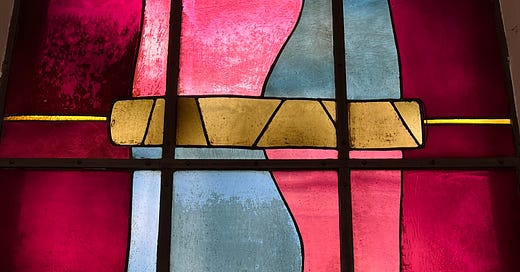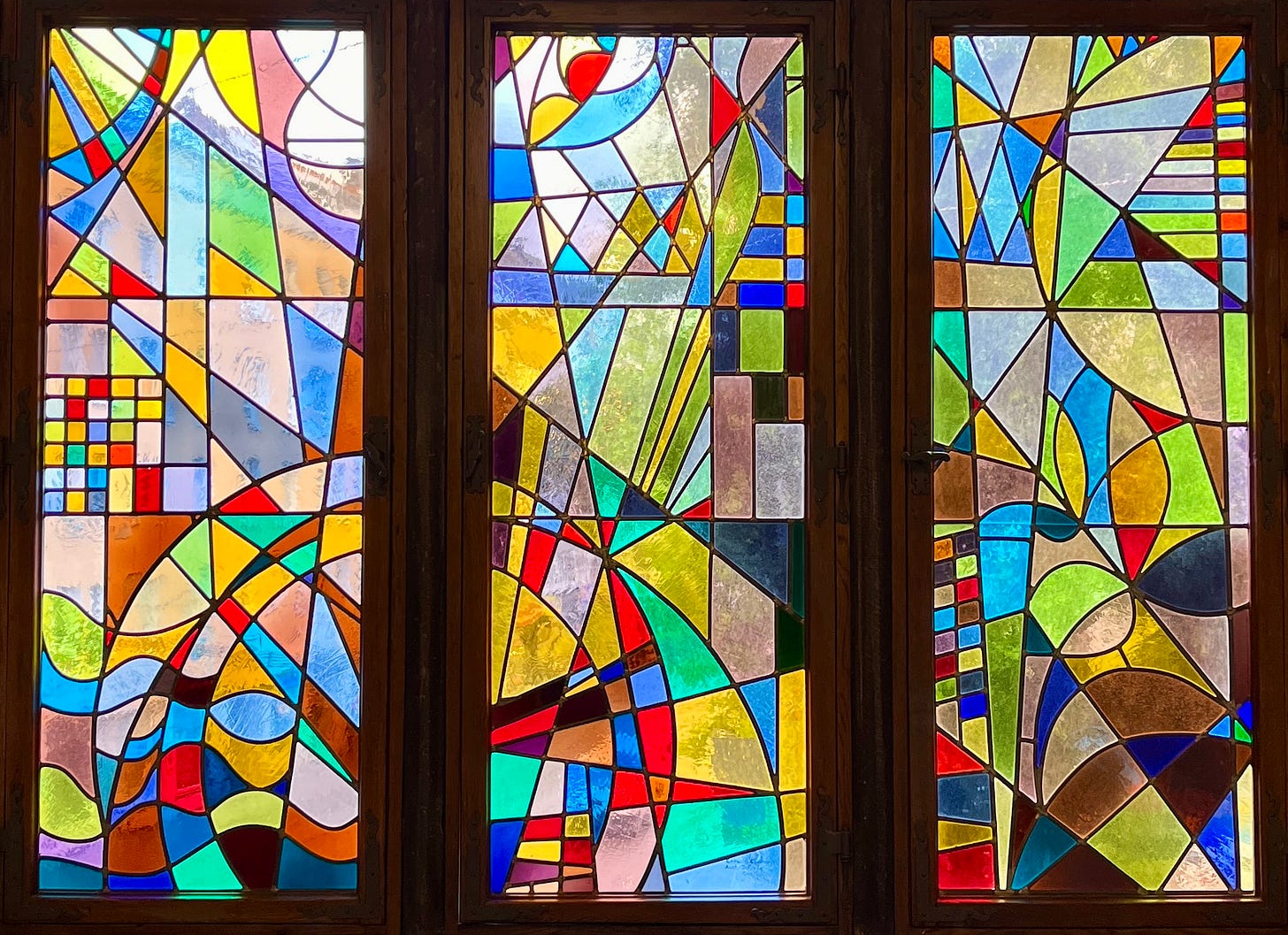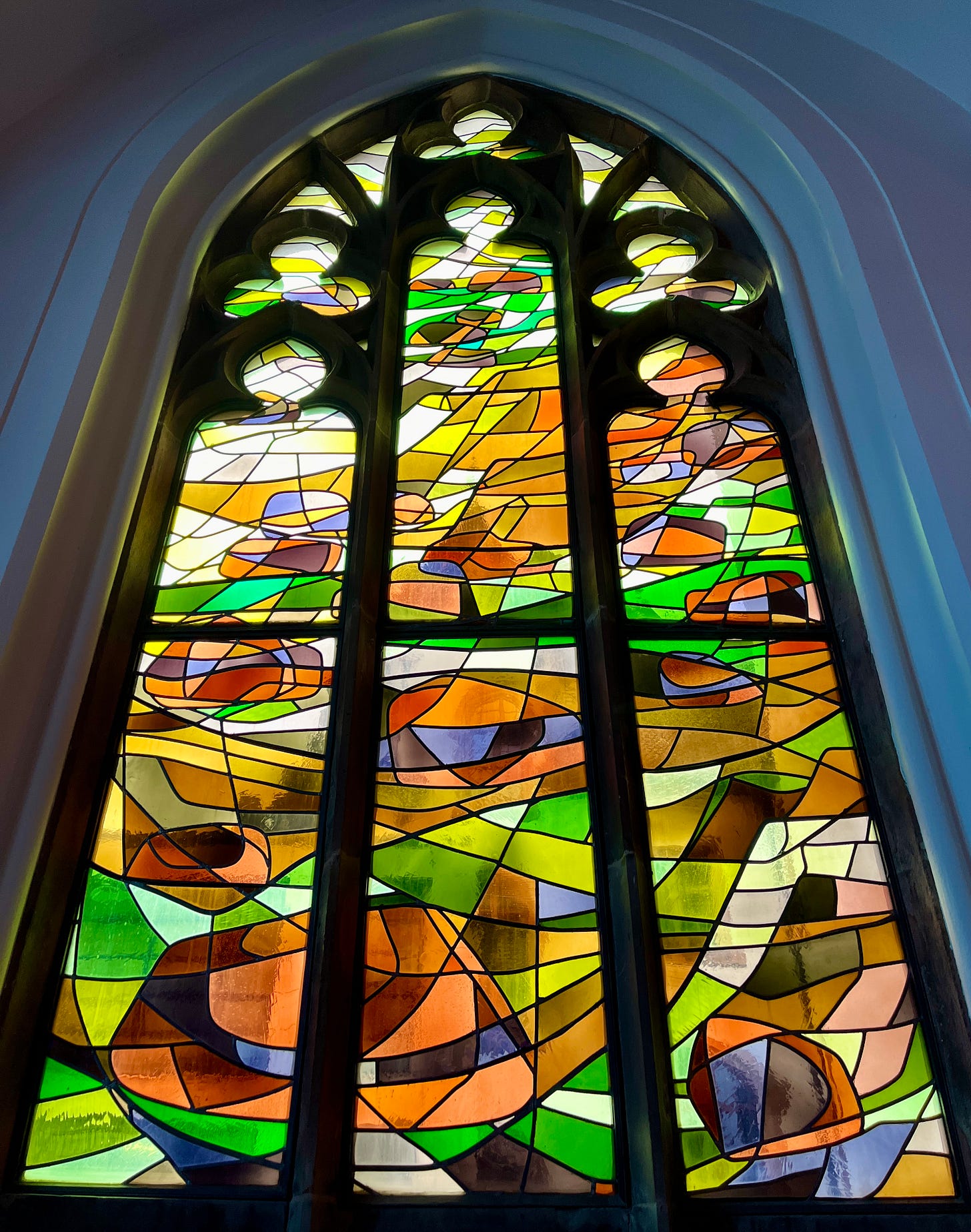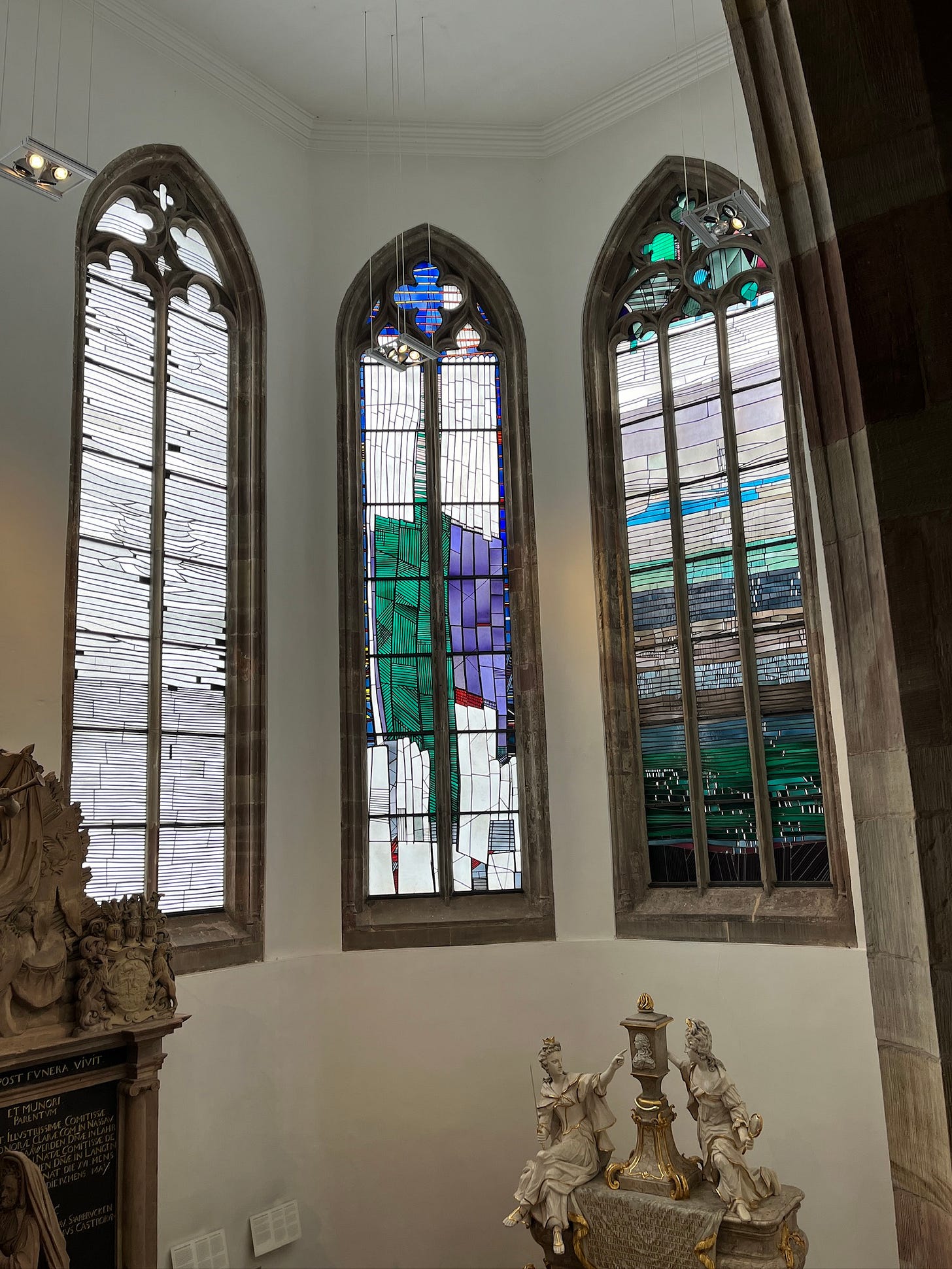Postcard from Germany
Some fragmented thoughts on Saarland, stained-glass windows, and unexpected glimpses of transcendent beauty
Friday, May 24
Nennig, Germany
Tristan and I arrived in Germany on Tuesday morning. We’re here for eight days, on a reporting trip for Travel+Leisure. I wrote to you a few weeks ago about my affection for small cities, which extends to underrated destinations. So we’re not in Berlin or Munich or Hamburg—I have nothing new to tell the reader about any of those places. Instead, we’re in Saarland, a tiny state in southwestern Germany that borders France and Luxembourg.
We spent our first three days in Saarbrücken, Saarland’s tidy capital. Saarbrücken is a bit smaller than Grand Rapids in terms of population but it has a much, much longer history. A castle has stood on the same spot on the south bank of the Saar River for more than a millennium. For about that long, there has also been an abbey a couple of miles away; King Louis VII of France stopped here with his crusading army, en route to Jerusalem, in 1147.
Like Grand Rapids, I guess, Saarbrücken also has so many churches. It should surprise nobody that I’m a church dork. Tristan knows that, wherever we go, if we walk past a church, I will more often than not test the doors to see whether it’s open. In the U.S., churches are almost always locked. In Europe, they’re almost always open.
The big surprise of this trip: the stained glass.
One of the reasons I travel is to be transported outside of my ordinary experience—to see and hear and taste and feel something new, to be moved, maybe even to be surprised. In Saarbrücken, it was the stained glass that unexpectedly did it.
Actually, it wasn’t in a church that I first noticed Saarbrücken’s stained glass. We had popped into the neo-Gothic Rathaus (City Hall) to peek at its interior, and as I was going up the steps inside, I saw two striking windows in a corner, one in all different shades of blue and another in earthy tones of brown and green. Later I learned that these were part of a set called “The Four Elements,” created by the artist Wolfram Huschens in 1951 to replace windows that had been destroyed during World War II.
Then, yesterday, we were just wandering around town when we happened upon the Schlosskirche, a former church adjacent to Saarbrücken’s castle. I hadn’t read anything about it. It wasn’t on our itinerary. But of course we had to go in—and as soon as we did, I felt this immense sense of gratitude. I’d never seen stained glass like this: modern, geometric, absolutely transcendent.
It pains me that the church is no longer a church; the last worship services were held in the 1980s, and it’s now a museum and a performance venue. But the stained-glass windows are still there, and they are stunning. What I’ve learned since: The Schlosskirche’s windows were created in the late 1950s by the artist Georg Meistermann, whose work is in the collections of museums including the V&A in London.
Meistermann was an anti-Fascist activist who had been expelled from art school in Düsseldorf because of his refusal to pledge allegiance to Hitler. His painting was labeled “degenerate art” by the Third Reich, which meant that it could not legally be exhibited or sold. “What is a painter,” Meistermann asked, “in a nation to which he is in opposition?”
Though a devout Roman Catholic, Meistermann had a strong contrarian streak when it came to the Church itself. “I make propaganda for the Christian faith,” he said. “I certainly don’t make propaganda for the Church.”
Meistermann saw all creation as the interplay between color and light. “The life of humanity is wrapped in color,” he said, and because God was the source of all light, God was also the force that enlivened the color in everything else. Stained glass was therefore the obvious medium through which to express these theological convictions.
I don’t have anything profound to say about these windows. All I know is that I felt something special deep within me as I stood in their presence, watching the light shimmer and shift amidst the vibrant colors.
Aren’t these the moments we long for? To catch sight of unexpected beauty is to recall the overwhelming power of grace. To glimpse such glory is to remember again how it feels to be surprised by the divine.
We’ll be back in Michigan in a few days, and after some uncharacteristically intermittent posting, I hope to resume the regular rhythm of writing to you weekly.
In the meantime, where will your travels take you this summer? And what can I be remembering in my prayers?
Tschüs,
Jeff








Danke for sharing your visit to Saarbrücken with us! Next time I go to Germany to visit family, I will have to include a day trip to Saarbrücken! This weekend I’ll be going to Niagara Falls (the Canadian side - I live near Hamilton, Ontario) with a family member visiting from Germany! Tschüss (2 x s at the end!) und Gottes Segen (and God’s blessings)
Thank you for the video on Meistermann! I've been so weighed down by fears of our own national doom that seeing his survival (refusal to bend to the Nazis) and use of light and color was a refreshing blast of holy design. I must read less analysis and experience more art....